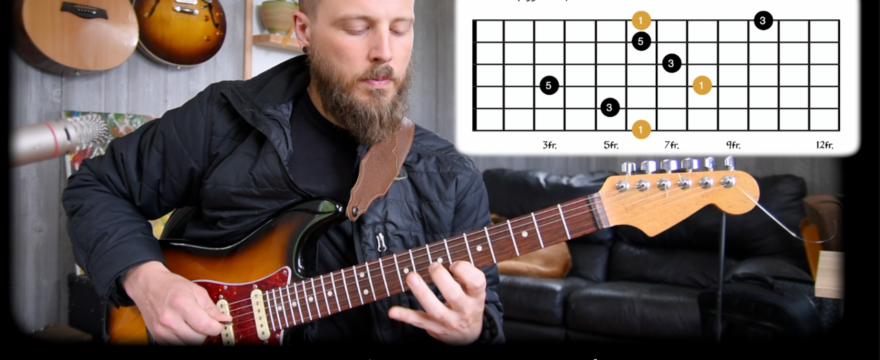Arpeggio Week!
It’s the second week of June, and that means it arpeggio time! I’ve really enjoyed diving into this topic once again. This week I cover a two octave arpeggio progression, using simple chord movement to demonstrate the use of inversions.
The progression is a I-IV-V in the key of B flat. If you know your number system, you will recognize this as the most common chord progression that typifies popular songs from every genre. It’s hard to think of a more fundamental chord pattern than this.
In this lesson I wanted to demonstrate one of my favorite ways to play arpeggios. By thinking of the triad shapes in two separate octaves I find that it is more visually simple to understand. There are many ways to make arpeggios on guitar, but this one works well for me! Maybe it will for you too.
Each position of the major triad has a neighboring shape of the IV & the V chord. In today’s lesson I demonstrate how to find the closest version of those related arpeggios.
If you put in some time on this two octave arpeggio progression, you’ll be building the tools to traverse the fretboard more effectively.
These types of patterns come out in my playing all of the time. I typically find myself using them to move quickly between different areas of the guitar neck.
You are also able to use these basic patterns to create other, more complex arpeggios. For example, if you take the major triad arpeggios demonstrated, and add in the natural 7 you’d have a great way to play a major 7 arpeggio.
This also relates very nicely to the concept I talked about a few weeks back. That was a lesson on Using Chord Shapes to Anchor Scale Patterns. This concept interacts nicely with what I talked about there, so check that out if you haven’t already.
This two octave arpeggio progression should get you nice and warmed up!
I’m gonna leave you this week with a clip from one of my heroes. If you don’t know about Lenny Breau, he is a very interesting guitarist. He is not extremely well known, except amongst avid guitar geeks. His career was a bit lukewarm due in large part to his own personal drug problems and lack of ability to keep himself together. Really, it’s quite sad to hear first hand accounts of those who knew him.
All that aside though, he did absolutely incredible things with the guitar that not many people have really been able to address with their own playing. I share this because much of my approach to arpeggios is influenced by this guy, and I still love to listen to him. Check out this video from a live tv session to see what I’m talking about.

Leave a Reply
You must be logged in to post a comment.